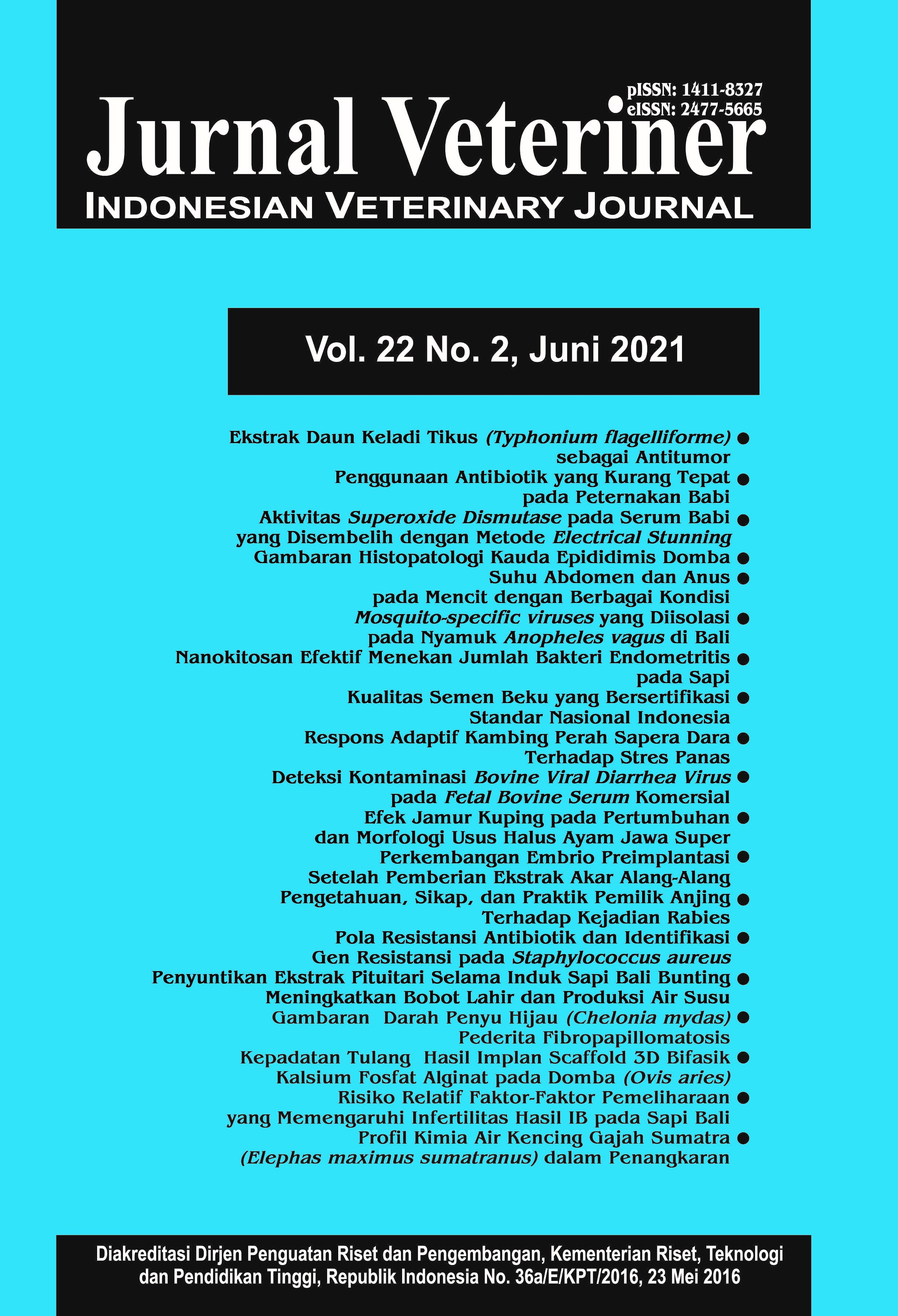Urine Chemistry Profile of Captive Sumatran Elephant (Elephas maximus sumatranus) in Bali Elephant Camp, Carangsari, Petang, Badung, Bali
ROFIL KIMIA AIR KENCING GAJAH SUMATRA (ELEPHAS MAXIMUS SUMATRANUS) DALAM PENANGKARAN DI BALI ELEPHANT CAMP) DI CARANG SARI, PETANG, BADUNG, BALI
Abstract
Sumatran elephant (Elephas maximus sumatranus) is the biggest land mammals in Indonesia in criteria A2c category Critically Endangered (CR) dan Appendix I in Convention on International Trade in Endangered Species of Wild Flora and Fauna (CITES). Considering the importance of conservation and health maintenance of Sumatran elephants, various diagnostic tests must be carried out to determine the health status of elephants ranging from physical examination to blood chemistry test and urinalysis.The aim of this study was to obtain the chemical profile of the Sumatran elephant (Elephas maximus sumatranus) which is captive in the Bali Elephant Camp, Carangsari, Petang, Badung Regency, Bali. The urine sample taken is mid stream (middle emission) urine. Sampling was carried out 5 times for 2 weeks with 2-3 days distance between samples taken and the dipstick test was carried out twice in one sample. Based on the results of this study, it can be concluded that of the 8 Sumatran elephants maintained at the Bali Elephant Camp all are 100% negative for glucose. Meanwhile, protein levels were found in 5 individuals (62.5%) in the range 0-2000. Positive bilirubin and hematuria were found in one individual (12.5%). Ketone levels are found in the range 0-160 in 7 individuals. A total of 84.7% of urobilinogen data (mg / dL) is 0.2. The pH value is in the range of 6-9, while the value of density is in the range 1-1,020. Leukocyte level (Leu / µL) is worth 70 (91.3%).



















